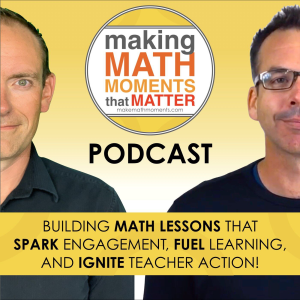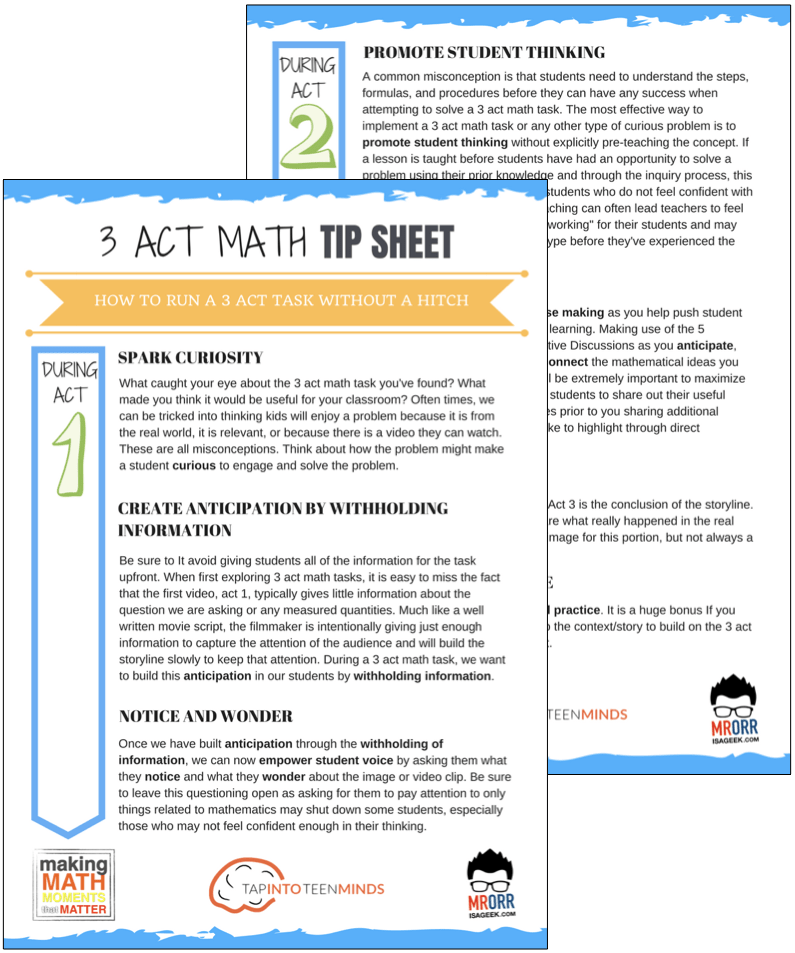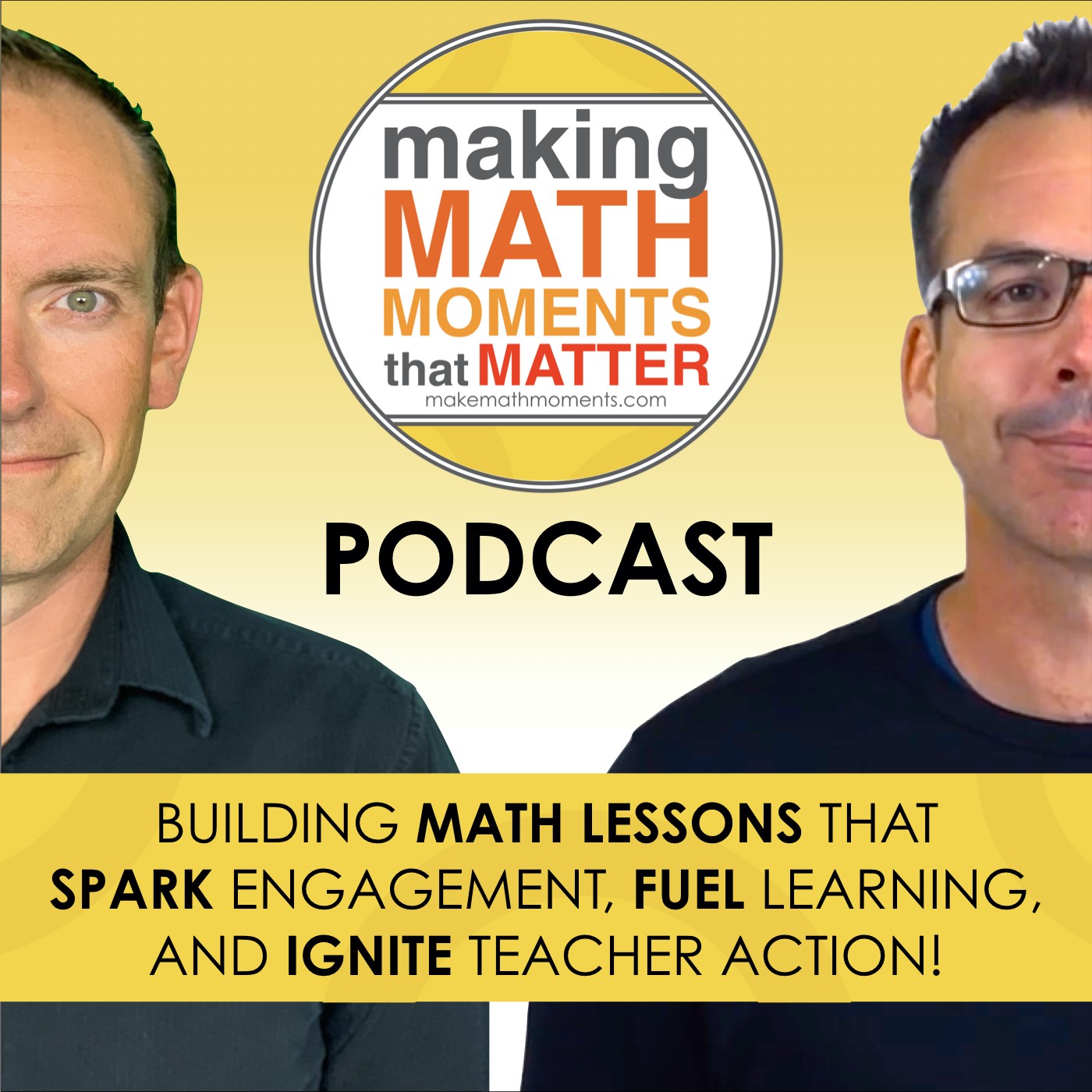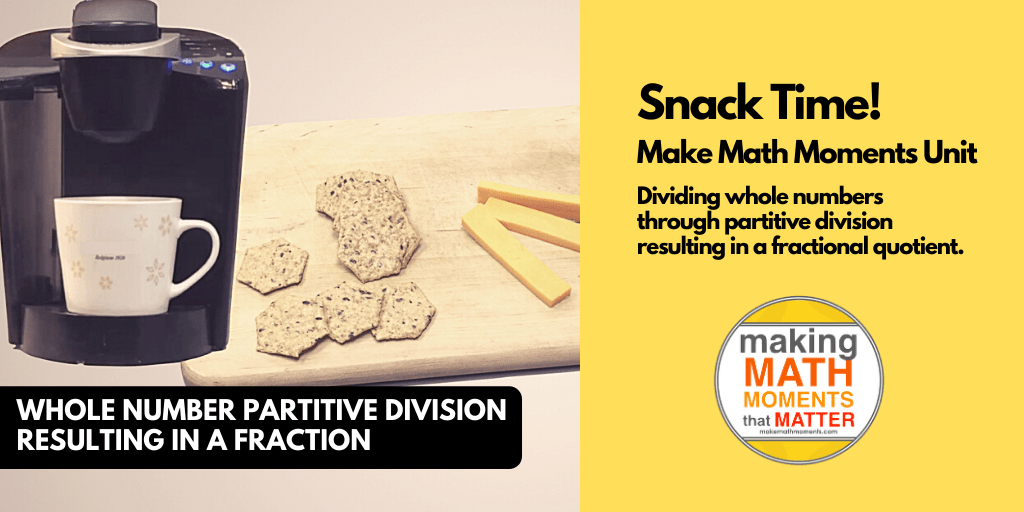Episode #317: Teaching Multiplication and Division: 10 Must Have Tools – An Interview with Dr. Nikki Newton
LISTEN NOW HERE…
WATCH NOW…
How do you help students master multiplication and division while keeping them engaged and confident?
In this episode, Dr. Nikki Newton shares how relationship-building and effective teaching tools can lower students’ fear of math and boost their fact fluency, especially in multiplication and division. Discover strategies that directly address the challenge of making math approachable and accessible for all learners.
By tuning in, you’ll learn:
- How to lower students’ anxiety around math and make learning more enjoyable.
- Why relationship-building is the key to unlocking students’ potential.
- Practical tools for teaching multiplication and division that go beyond memorization and focus on deeper understanding.
Ready to transform your math teaching and help students thrive? Hit play and discover Dr. Nikki’s must-have strategies now!
Attention District Math Leaders:
How are you ensuring that you support those educators who need a nudge to spark a focus on growing their pedagogical-content knowledge?
What about opportunities for those who are eager and willing to elevate their practice, but do not have the support?
Book a call with our District Improvement Program Team to learn how we can not only help you craft, refine and implement your district math learning goals, but also provide all of the professional learning supports your educators need to grow at the speed of their learning.
Book a short conversation with our team now.
Be Our Next Podcast Guest!
Join as an Interview Guest or on a Mentoring Moment Call

Apply to be a Featured Interview Guest
Book a Mentoring Moment Coaching Call
Are You an Official Math Moment Maker?

FULL TRANSCRIPT
Jon Orr: Hey there, Nikki, welcome back to the Making Math Moments That Matter podcast. As always, it’s a pleasure to speak with you and get caught up and hear your wisdom, your insights into math education in general. We’ve talked with you on the podcast a few times. We’ve had you, think, Kyle, think we’ve had Nikki at every single summit.
that we’ve had over the course of this will be the sixth summit coming up in November. And I think six years of you just giving so much amazing wisdom, Nikki. Welcome back. You know, what’s going on over here in your neck of the woods.
NICKI: What is going on in my neck of the woods? I don’t know. We’re over here. I’m doing a lot of different things looking at, you know, we still have so many kids that are, are, have unfinished learning. So fully looking and thinking about like, how do we catch kids up with their basic facts? Right? How do we catch kids up with problems? I’m always telling schools, you want to move your scores? Do two things. Work on making sure all your kids have their grade level fluency. At least. and work on problem solving always. So I’ve been doing a lot of thinking. just wrote a book on fluency doesn’t just happen looking at multiplication and division with Alison Maloe and Annalise Rekard.
Kyle Pearce: Mm-hmm. I love this right off the hop you’re giving people something big to chew on here. And we couldn’t agree more with the idea that if students are not numerate, if they are not fluent and flexible with number, with basic facts, that’s addition, subtraction, multiplication, division, and understanding the behaviors of these operations.
it really does hinder their ability to do anything else, right? Because everything else is going to build off of those things. And I love how you’ve also articulated that problem solving is kind of why we want those tools, right? So it’s not an either or, right? Cause some people might push, you know, that, we’re going to do all these ones, these things, and we’re not going to do some of that stuff, but really they go hand in hand and they’re very, very important. So I’m super excited to dig in with you.
And actually, John, we’re going to have to go back and we’re going to have to count up the episodes because I think Nikki might actually be approaching James Tanton for one of our guests who’s come on the show most. So we’re going to have to get back to you on that. We should have done that ahead of this call, but I’m, super curious about it. But before we dig in, Nikki, you’ve shared before the math moment that you remember from growing up. But the question we have for repeat guests around math moments is what would you say is a math moment lately? that’s either, you know, been on your mind, something that’s maybe resonated with you or something that you feel is a really important piece that you’d like to share with the audience here today.
NICKI: Something I’ve been thinking about and that I’m actually writing about for one of my upcoming books is I was doing some high-dose tutoring. I believe in swimming in the pools that we talk about. I jumped in and I took two groups of kids, took a group of third graders, took a group of sixth graders and tutored them for 10 weeks, which is a typical round for high-dose tutoring. Those kids taught me so much. Hopefully, I taught them some stuff too.
But there was one little boy who I will call Julio. Christine actually talked a little bit about this story in her Ignite presentation at NCPM. And Julio, he really gave me a run for my buddy. And I was doing it all for free. boy, that boy was building lasers out of markers. I’ve teaching for 35 years. I don’t believe in kicking kids out of class. I never have. Because I just believe you give up your power if you kick. mean, if they’re extraordinary, then you know, but in general, that’s not my go to.
I don’t send you down to the I don’t send you to the principal’s office. You have to stay here and we have to figure it out together. So I wanted to kick him out of, I wanted to kick him out of Zoom. And I talked to everybody, could, everybody would listen. And I finally came to a conclusion, I said. And I talked with Christine about it. Because what I am is a reflective practitioner. I’m saying all the things, whatever I’ve learned, and whatever I haven’t learned and we’re learning every day. I’m a reflective practitioner. So I thought, I really had to, you know, give myself a pep talk. I was like, Nick, you can’t get the boy out of class. And then at one point he refused to come. Then I was doubly insulted. was like, how can you that? He’s gotta come. And so, so what I learned from that, we went on and we worked it out because I changed. And I talked with the…
the one of the paraprofessionals. And he told me, goes, he goes, Julio, that boy had trouble with everybody. He goes, he’s got beef with his mama. When he said he’s got beef with his mama, because I thought, if you got beef with your mama, you got something going on, right? This is not about, this is about Julio.
This is about me reaching into my teacher toolkit way deep down into my bag and pulling out whatever I need, stretching my own pedagogy so that I can reach Julio. Because the reason I’m even here is because Julio is here. I can’t kick the reason I’m here out of class. So what it taught me was about building relationships and reaching those kids that are easy to kick out, right?
By the end, I spent 10 weeks with Mr. Julio and I knew, I kept a journal on it. It was that impactful for me. I kept the journal on it and then at the very end, I kept putting post scripts. And at the very end, the post script was, well, today was the last day of class. And Julio, I said it, does anybody have any questions? And Julio said, yes, I do. I have a question. Can you tell me a little bit more? Can we go over coordinate grids again?
And I thought, got him, I got him, right? I got got him, I got him. And so it really taught me about the importance of relationships. Because you see, I’ve been doing a lot of research on relationships. I don’t care what you know, and kids don’t care what you know, until you care about them. And so I don’t care what you’re trying to teach kids, multiplication, division, addition, subtraction.
Jon Orr: You got them. You got your hooks in there.
NICKI: Or problem-solving if if they don’t think you care They’re gonna show up as who they are who you’re getting to wake up and say I’m gonna go to session so I can Lay on dr. Nicky’s nerves because that boy didn’t get on my nerves. He laid on my nerves and did advanced yoga moves. Okay What is this mean this what is this thing we call teaching and I’ve been talking about this now for a couple of years
And people have been talking about it for, you know, ad infinitum, that the idea that teaching is about relationships. And if you don’t have the relationships, you have nothing, right? That they talk in the research on map intervention. They say we actually should have a space for relationships and be told and do relationship mapping like.
Who does this kid have a relationship with? Right? The great Rita Pearson said, everybody needs a champion. Who is Julio’s champion? And how am I going to show up for him in a different way? Because at first I was wrong. I was showing up as every other adult does in his life. Everybody’s mad at Julio. And I was just showing up as, you know, he was doing stupid stuff and I was mad about it. But then I just…
Because I realized if I didn’t change I was never gonna reach Julio and it’s about reaching Julio and all of those kids because the thing is I was teaching ratios and unit rates and Julio cannot divide. He cannot multiply. So I had to accelerate and not go back and remediate and talk about stuff he was supposed to have learned and all these other grades. I had to accelerate.
pull up what he needed for his grade level standard. Because that’s one of the things that I truly believe in that I’ll talk about in the session. All kids deserve to be taught the grade level standard. as teachers, we have to stretch our own pedagogy, which is what Christine always says. Christine Mulgrave King always says, stretch your pedagogy. Stretching our own pedagogy so that we can reach Julio. That Julio
needs to learn unit rate. He is in sixth grade. I cannot go back and spend three weeks on teaching Julio how to divide and divide. I have to weave that in to the grade level standard as I’m teaching because Julio can learn, right? The other day on Twitter, I reposted in several tweets the stuff from, now I’m going blank on the name, but the lady that wrote about Accountable Talk and about Resnick.
how smart is learned, right? Smart is learned. And if I really believe that smart is learned, if we as educators really believe that smart is learned, then what do we do differently? If I really, really, really believe that even though Julio is in sixth grade and he has managed to get there without any additions, subtraction, multiplication or division, but if I really believe that smart is learned, then how am I going to teach Julio?
Because see, I’m going to approach it different if I really believe that boy can learn. Right? So when you ask me what is my most recent math moment, that is what comes up for me. That relationships matter, that all kids can learn, and we have to not just talk it, we have to walk it. And sometimes walking that path is not an easy road.
Julio will do advanced yoga moves on your nerves. And you have to say, but this is about him. I’m here because he’s here. I am going to keep the promise of public education. And I had some teachers from private schools say to me, we keep that promise too, Dr. Nikki, we keep that promise too. said, I know, know, I know. As a public educator, right, I’ve only ever taught
public education. And I believe that. So I’m speaking from the point of public education, but I realize all educators that make this promise, right? The promise of public education is that we teach the public. Whoever walks through the door, whatever is going on with them, I don’t care, you know, and I hate to pathologize parents. I don’t believe in doing that.
Jon Orr: me too.
NICKI: I don’t care where they come from, what their zip code is, what they knew if they never went to school, if they did, what their language is, what their gender is. I don’t care about any of that. All I know is I made a promise 35 years ago to teach public school. And I wanna always honor and keep that promise. And Julio reminds me, you made a promise to reach and teach him.
So you need to stick with it. You need to get with the program, Dr. Nikki Newton. You can’t get that boy out of class. What is wrong with you? It really made me really dig deep. Julio taught me some stuff. I’m so glad I jumped in the pool and swam because it reminded me. You know, I’m a consultant. go to schools. I work with teams. I do all that stuff. But it reminded me of the swim.
Right? Because I was right there in the swim with Ulyon every week.
Jon Orr: Yeah, I think like your epiphany about relationships, like you said, like you had to like wake up and go like, this is why I’m here. And I think there’s still, and I had that epiphany as well. Like I didn’t get into teaching and have that relationship focus and we all have these epiphanies and I’m in the epiphany.
I’m so curious about when we have the epiphany and when we don’t. Some teachers come in already knowing this, and this would be the goal, is how do we make sure that that happens, right? Because that is when we have that epiphany, that relationships are the priority, then everything about your job just becomes so much easier, even though you think it’s gonna be harder. so I wanna kinda like pivot this, because I wanna pair the relationship aspect of what we’re doing in our classrooms with.
what you want to talk about at the summit, which I know is this, and specifically I know how this relates or how the relationship component can relate into how do we specifically teach about topics, topics specifics, like teaching multiplication, division, like your topic title in the summit coming up in November is teaching multiplication to 10 must have tools. And I’m gonna like, I’m gonna go on a limb here and you’re gonna say like, it all is surrounded by relationships.
NICKI: Yes. Yes, well, you’re right. And it’s also about lowering students’ affective filter. There’s a story again about some sixth graders. I was in Cali and I was working with some sixth graders and they were in intervention and they knew that they were gonna have a guest teacher. And so I went in and the kids came in the room and the language that they were speaking was amazing to me. They were like, we’re terrified. And they were using some other word.
They’re like, we’re terrified. We just don’t know what’s going to happen. And we don’t know how to multiply. And we’re terrified. We fear you’re going to lose yourself. And so the first thing I did was I just kind of smiled at him. said, let me help you. said, this is I promise. I promise you one thing. I promise you, this is before we started the lesson. I said, I promise you that I’m not going to show you anything that you’ve never seen before. They were like, huh.
So they sat down and I pulled up a PowerPoint because I really, and I’ll talk about this during the summit, I really, really believe in the power of pictures. So I pulled up pictures. They’re like, it’s like, what do we see here? Getting kids to speak the language, we see three groups of six cans of soda. how do we write that out? And the groups got bigger and smaller and that was a multiplication sentence.
What does it look like? If that was a division sentence, what does it look like? That’s very different, right? Than just putting up naked numbers and asking kids to do stuff. So, you know, the power of visualization can take us so far, right? And so by the end of the lesson, that, you know, their, their active filter, which we usually talk about with, you know, English language learners or, you know, multilingual students, it just began to lower.
Right? Because they’re like, I don’t have to be afraid. I do see this. So I think one of the things I really want to talk about in the session is like, how do we lower our children’s affective filter so they can even enter into the realm of I am a learner, I am smart, I can do this. Right? And something fearful. There’s so much fear. And I think we don’t take that fear head on as teachers in our planning. What can we do?
in the planning of multiplication and division that lowers the affective filter where you get kids like when I’m teaching multiplication and division, I’ll do things like I will, I don’t tell the kids today, today is the day and we’re doing division. I tell the kids, you know, I was wondering, said, there’s 12 legs and I wonder how many elephants there are. And then they’re like, why didn’t you say that?
You know what I mean? They can figure that out. If I put 12 right on the board and write that as an equation, are like, whoa, whoa, I don’t know. I can’t, I can’t. But if I ask them a riddle, all melts away because now they’re thinking about the riddle and they feel like, well, I know what Elvin looks like. And I’ll do easy problems and then go to harder problems. So there were 10 legs. How many flamingos were there?
They know that people say, kids can’t divide by eight. But if you say that they were spiders, you say there’s 24 spiders. I mean, you say there’s 24.
Jon Orr: Too scared. Too scared to
Kyle Pearce: Especially at this time of the year when we’re recording in October, it’s Halloween month.
Jon Orr: I, I was coming in the house.
NICKI: I was in a classroom last week doing this with some kids. We were talking about blocks and spiders. But then they begin to engage with the math because they’re like, I don’t know, I asked them something like, I said something like there’s 96 feet, how many bats? they’re all trying to figure out how. Then we can get into the math and like.
Are we going to draw those bats? Are we going to come up with some other models? we begin to really talk about math, and kids aren’t afraid of that math because they feel like, I can figure that out. I have everything I need to figure that out. You know what I mean?
Kyle Pearce: I love it. I, what I’m hearing from you and you know, even just in the examples you’re giving, you’re painting a very clear picture for everyone to get a sense as to what you mean when it, when you say that we need to help students with their fact, their fact fluency with understanding how to work with the operations that, know, we’re not talking about just naked problems and blind memorization. are talking about doing all of these things to get students to essentially take what they know.
and apply it to mathematics and make these connections as we go along with so that the math moments community is gonna feel very well connected here. So my wonder is for those who are listening, you’ve shared a number of things here today that are really important. This idea of relationships is key, right? This idea of fact fluency being so important and problem solving because
folks are gonna be signing up for your summit session on teaching multiplication and division. And you’ve even mentioned 10 must have tools. What would you say would be the big takeaway you’re hoping that those participants receive when they join you for our summit session coming up in November?
NICKI: Well, I want people, of all, and you all know this, I want everybody to fall in love with the beaded number line. And then I also would like people to really reconsider the usefulness of the 10 row rec and rec for multiplication and division and business. And I would also, I’m going to sprinkle, just sprinkle the conversation.
with some things about Montessori. Because you see, I just don’t understand why in public school, we have made a very severe distinction. That’s Montessori and this isn’t. And if you look at what we’re doing, the that’s Montessori stuff, the kids understand.
dividing four digit numbers with reasoning and the fourth graders are like what? Because the folks have place value. If you don’t do anything else in Montessori, you learn place value. And I think you do a lot of other things. But also they have the addition, subtraction, multiplication and division game wrapped up, right? The tables that you use, the peg, all that. So I just wanna sprinkle that in, get people to kind of think about
What does it mean if we dare use any of those Montessori tools?
Jon Orr: yeah, you know what? You just spoke music to Mrs. Orr’s ears. Mrs. Orr is a Montessori-trained educator and been doing it for 20-something years. So I’m gonna tell her to come to your session and say, get in there and then get in there and listen to Dr. Nikki because she would just be, she’s gonna join right in probably. She’s gonna wanna know all that.
NICKI: my goodness. Yes.
Jon Orr: Dr. Nicky, it’s always a pleasure talking with you. And I know that this was too short and people listening right now is like, just keep going, just keep going. We’re not ready to turn this off yet. We’re gonna bring her back on. We’re gonna talk about guided tutoring and some of the other things that you’re passionate about, but in November, if you are listening to this right now, November.
15th, 16th, 17th, you can catch Dr. Nikki live in her session on multiplication and division and 10 must tools. Head on over to summit.makemoments.com and get yourself registered right now. It’s completely free, completely free for the weekend. And you can join us and amongst many other sessions throughout the weekend. Nikki, thanks so much. We appreciate you and appreciate the wisdom you bring to the community.
NICKI: Yes. Yes. Yes.
Thank you. Well, thank you. It’s an honor to be invited to participate.
Kyle Pearce: Thanks, Snaky.
NICKI: Okay, bye.
Thanks For Listening
- Book a Math Mentoring Moment
- Apply to be a Featured Interview Guest
- Leave a note in the comment section below.
- Share this show on Twitter, or Facebook.
To help out the show:
- Leave an honest review on iTunes. Your ratings and reviews really help and we read each one.
- Subscribe on iTunes, Google Play, and Spotify.
DOWNLOAD THE 3 ACT MATH TASK TIP SHEET SO THEY RUN WITHOUT A HITCH!
Download the 2-page printable 3 Act Math Tip Sheet to ensure that you have the best start to your journey using 3 Act math Tasks to spark curiosity and fuel sense making in your math classroom!

LESSONS TO MAKE MATH MOMENTS
Each lesson consists of:
Each Make Math Moments Problem Based Lesson consists of a Teacher Guide to lead you step-by-step through the planning process to ensure your lesson runs without a hitch!
Each Teacher Guide consists of:
- Intentionality of the lesson;
- A step-by-step walk through of each phase of the lesson;
- Visuals, animations, and videos unpacking big ideas, strategies, and models we intend to emerge during the lesson;
- Sample student approaches to assist in anticipating what your students might do;
- Resources and downloads including Keynote, Powerpoint, Media Files, and Teacher Guide printable PDF; and,
- Much more!
Each Make Math Moments Problem Based Lesson begins with a story, visual, video, or other method to Spark Curiosity through context.
Students will often Notice and Wonder before making an estimate to draw them in and invest in the problem.
After student voice has been heard and acknowledged, we will set students off on a Productive Struggle via a prompt related to the Spark context.
These prompts are given each lesson with the following conditions:
- No calculators are to be used; and,
- Students are to focus on how they can convince their math community that their solution is valid.
Students are left to engage in a productive struggle as the facilitator circulates to observe and engage in conversation as a means of assessing formatively.
The facilitator is instructed through the Teacher Guide on what specific strategies and models could be used to make connections and consolidate the learning from the lesson.
Often times, animations and walk through videos are provided in the Teacher Guide to assist with planning and delivering the consolidation.
A review image, video, or animation is provided as a conclusion to the task from the lesson.
While this might feel like a natural ending to the context students have been exploring, it is just the beginning as we look to leverage this context via extensions and additional lessons to dig deeper.
At the end of each lesson, consolidation prompts and/or extensions are crafted for students to purposefully practice and demonstrate their current understanding.
Facilitators are encouraged to collect these consolidation prompts as a means to engage in the assessment process and inform next moves for instruction.
In multi-day units of study, Math Talks are crafted to help build on the thinking from the previous day and build towards the next step in the developmental progression of the concept(s) we are exploring.
Each Math Talk is constructed as a string of related problems that build with intentionality to emerge specific big ideas, strategies, and mathematical models.
Make Math Moments Problem Based Lessons and Day 1 Teacher Guides are openly available for you to leverage and use with your students without becoming a Make Math Moments Academy Member.
Use our OPEN ACCESS multi-day problem based units!
Make Math Moments Problem Based Lessons and Day 1 Teacher Guides are openly available for you to leverage and use with your students without becoming a Make Math Moments Academy Member.
Partitive Division Resulting in a Fraction
Equivalence and Algebraic Substitution
Represent Categorical Data & Explore Mean
Downloadable resources including blackline masters, handouts, printable Tips Sheets, slide shows, and media files do require a Make Math Moments Academy Membership.
ONLINE WORKSHOP REGISTRATION

Pedagogically aligned for teachers of K through Grade 12 with content specific examples from Grades 3 through Grade 10.
In our self-paced, 12-week Online Workshop, you'll learn how to craft new and transform your current lessons to Spark Curiosity, Fuel Sense Making, and Ignite Your Teacher Moves to promote resilient problem solvers.










0 Comments